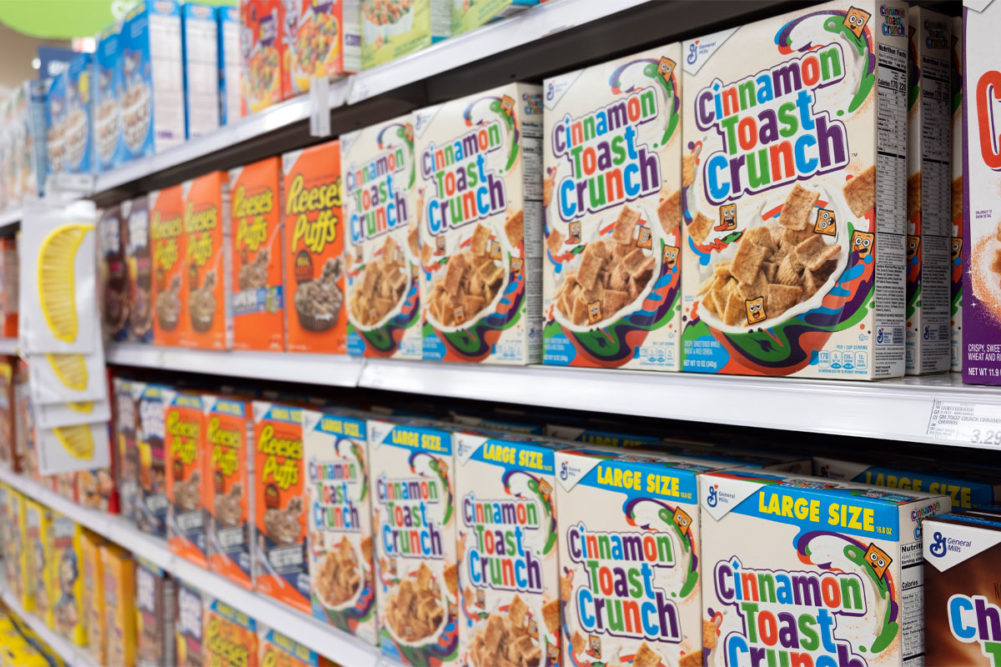KANSAS CITY — Even as dollar sales in the ready-to-eat cereal category inch ever closer to $10 billion there is a sense of urgency to arrest the slide in unit sales. In some ways, that has been accomplished.
According to Circana, a Chicago-based market research firm, unit sales in the RTE cereal category fell to 2.28 billion in the 52 weeks ended Nov. 5, down 4.7% from the same period a year ago. By comparison, the year-over-year unit sales decrease was 5% between 2022 and 2021 and 7% between 2021 and 2020, according to Circana. Unit sales have fallen 9% since 2021.
Dollar sales, meanwhile, continue to climb. As recently as November 2021, annual dollar sales in the RTE cereal category were $8.67 billion, a total that now stands at $9.98 billion, up 15% over the past three years, according to Circana.
The second largest company in the RTE cereal category, WK Kellogg Co is now singularly focused on growing its cereal business (see related story on Page 14). Fresh off its spinoff from Kellogg Co., the newly independent company expects to be stronger as it now is able to direct resources toward unlocking the full strategy of its business, a strategy “focused on and dedicated to selling only cereal,” said Gary H. Pilnick, chairman and chief executive officer of Battle Creek, Mich.-based WK Kellogg in a Nov. 8 conference call with analysts.
A prime example of WK Kellogg’s more focused efforts is taking shape with the company’s Bear Naked brand. WK Kellogg’s newly integrated commercial team recently relaunched the brand with a focus on increasing taste appeal and driving fun.
WK Kellogg hopes that its efforts help it narrow the gap on General Mills, Inc., Minneapolis, which with dollar sales of $3.22 billion in the 52 weeks ended Nov. 5 commands a leading position in the category, according to Circana. General Mills has the three largest RTE cereal brands in the category in terms of dollar sales in Honey Nut Cheerios, Cinnamon Toast Crunch and Cheerios.
In a September conference call, Jeffrey L. Harmening, chairman and CEO of General Mills, responded to an analyst’s question as to whether the RTE cereal category would continue to face challenges.
“I would let you know … that cereal is still the No. 1 item in the morning for breakfast,” he said. “And it’s almost 20% of breakfast eatings, I guess 19%. So that’s here in the US.”
Mr. Harmening said General Mills has a nearly 50% share of the category’s new product volume, which shows its continued efforts to innovate.
“My expectation for our cereal business is that we grow a little bit every year and hopefully take a little bit of share every year,” he said.
Jonathon J. Nudi, group president of North America Retail at General Mills, said the company is more excited today about cereal than it was a decade ago.
“The other question we get a lot is, ‘What happens if one of our major competitors gets more focused?’” Mr. Nudi said. “And what we would tell you is that’s actually a good thing. If you go back through history when the two major competitors in the category are supporting the category with marketing as well as innovation, the category does better. We hope that everyone comes to play, and we can continue to grow those categories as we move forward.”
With a little more than 19% market share of the RTE cereal category, Post Holdings, Inc., St. Louis, has benefited from consumers trading down to value in private label products and the company’s strong share in these subcategories.
“While still below premium-branded cereal, our profit margins on value of private label products have meaningfully increased over the past several years,” said Jeff A. Zadoks, interim president, CEO and chief operating officer of Post, during a Nov. 17 conference call with analysts.
“Our view of the category … is that it’s going to be challenged — perhaps maybe I should say even more challenged than normal until we lap the SNAP benefit decline that occurred in March 2023,” he said. “We expect to return to the pre-pandemic levels of flat to down a couple percent. As we plan for ’24 for our business, we use those category dynamics as a baseline. We believe that we can perform somewhat better than that but we’re not counting on volume growth in our plan for next year. We would expect that there’s going to be some volume declines.”





